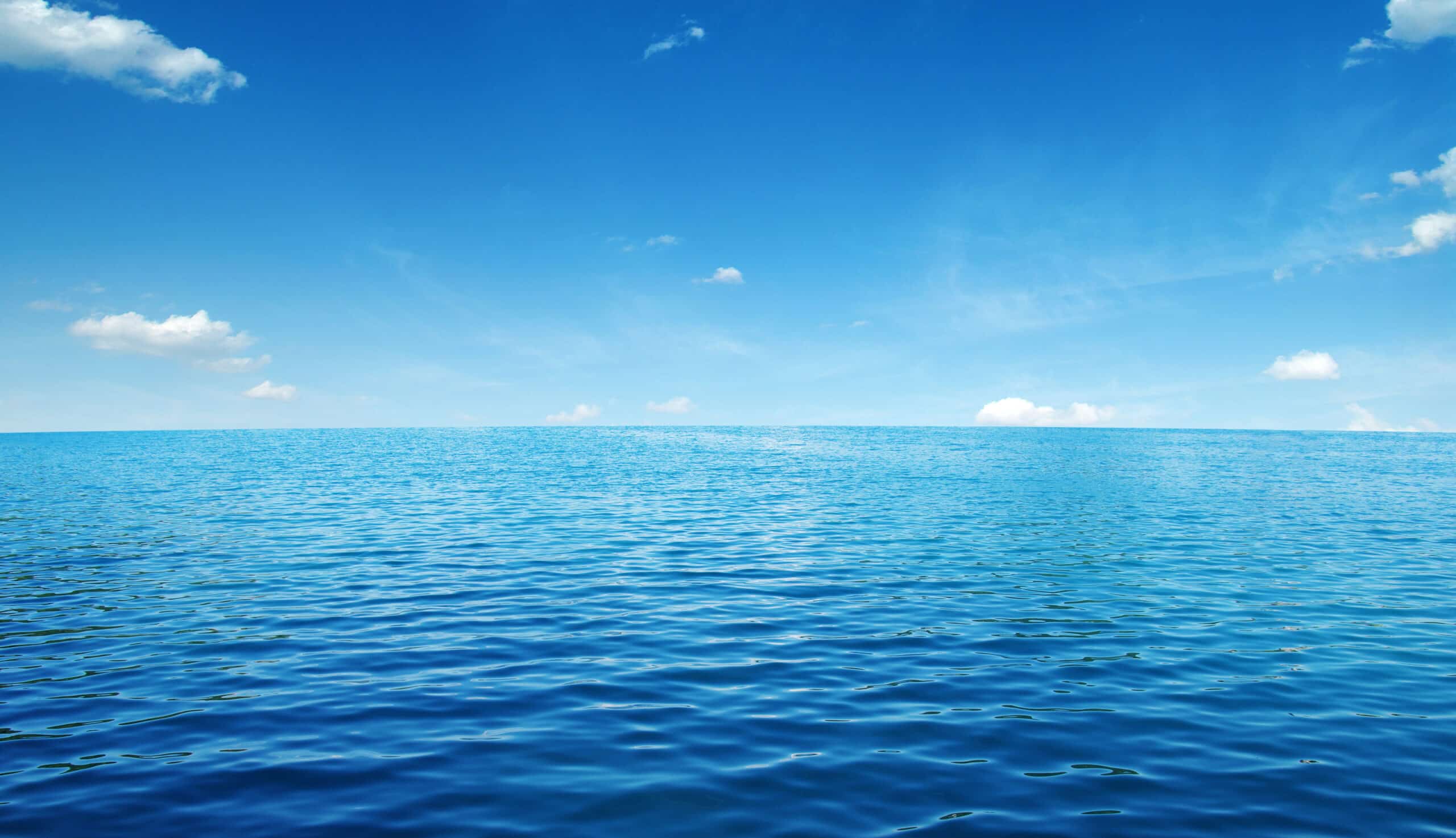
What is Marine Geoengineering?
Marine geoengineering refers to attempts to manipulate the Earth’s oceans to counteract the effects of climate change. Most marine geoengineering proposals attempt to draw down carbon dioxide (CO2) from the atmosphere and store it in the ocean, sometimes called “marine Carbon Dioxide Removal” (mCDR) or “ocean-based Carbon Dioxide Removal.” These technologies would have to be implemented at truly massive scales to have any impact on the climate, imposing disastrous side-effects on ocean ecology, marine life, coastal communities, and even the ocean’s existing ability to absorb carbon dioxide from the atmosphere. Many companies and startups are rushing to implement marine geoengineering to sell “carbon credits” to polluting companies for a profit.
The most common types of marine geoengineering proposed are:
- Ocean Iron Fertilization (OIF) – depositing iron into ocean waters to induce the growth of phytoplankton, tiny ocean algae that consume carbon dioxide via photosynthesis and serve as a major food source in the ocean. OIF would require 5,500 chemical tankers dumping iron fertilizer over 20% of the ocean’s surface 15 times per year.
- Ocean Alkalinity Enhancement (OAE) – dumping alkaline substances into the ocean, which causes ocean waters to absorb more carbon dioxide from the atmosphere. OAE would require mining, processing, and transporting 10 gigatons of alkaline substances such as limestone to a global shipping network every year (for perspective the global coal industry mines 7 gigatons of coal per year). Every large cargo ship and tanker in the world would have to devote their entire cargo capacity to alkaline solution for continuous release along trade routes.
- Biomass Sinking – seaweed grown in industrial seaweed farms or plant byproducts (like wood chips or plant stalks) are sunk into the deep ocean with the goal of trapping the carbon dioxide they consume via photosynthesis. Up to 20% of the open ocean would have to be covered with seaweed farms.
- Artificial Ocean Upwelling (AOU) – pipes reaching depths up to 3,000 feet pump colder, nutrient-rich water from the ocean floor to the surface, which cools the Earth’s surface causing greater uptake of carbon dioxide on land, and stimulates the growth of algae that also consume CO2. Over 180 million pipes would need to be installed, and placed near the poles in the Northern Pacific and Southern Ocean.
- Marine Solar Geoengineering – several solar geoengineering technologies, which aim to reflect a portion of the sun’s rays back into space, would also have profound impacts on the ocean environment. These include attempts to brighten the ocean’s surface (Surface Albedo Modification) or brighten marine clouds (Marine Cloud Brightening). See our solar geoengineering page for more details.
Although geoengineering boosters claim that large-scale carbon dioxide removal may be necessary to meet global climate goals, modeling has found that marine CDR technologies, even when conducted continuously at the largest scales conceivable, would have a limited impact on global warming (less than an 8% reduction). These estimates do not include the CO2 emissions from the vast mining, infrastructure, and transportation operations required for deployment, which would further offset or fully eliminate these CO2 reductions. Finally, it is impossible to directly measure and verify carbon capture for most marine geoengineering techniques, making their effectiveness difficult to prove.
Is marine geoengineering dangerous?
Dumping massive quantities of iron, alkaline substances, or plant mass into the ocean would have profound impacts on the ocean environment, as well as the billions who rely on the ocean for their livelihoods. Marine geoengineering approaches that stimulate large-scale growth of phytoplankton or seaweed in order to capture carbon would dramatically disrupt marine ecosystems and biodiversity, but not as a side-effect: ecological disruption is actually the intended mechanism for carbon capture.
- Ocean iron fertilization, if conducted at enormous global scales covering 20% of the ocean’s surface, would have a minimal impact on atmospheric CO2 (offsetting less than 1% of human CO2 emissions). However, it would completely transform marine ecology in hard-to-predict ways by altering the base of the food chain, and could lead to the creation of toxic algae blooms in the ocean, deprive large areas of the ocean of oxygen, and worsen ocean acidification in the deep sea.
- Ocean alkalinity enhancement would likely emit more CO2 than it would capture due to the required mining, transportation, and shipping of alkaline materials. Dumping alkalinity into the ocean would threaten phytoplankton and zooplankton communities, the microscopic organisms that currently play a crucial role in removing CO2 from the atmosphere and form the base of the food chain for all marine life. Larger marine animals such as whales, dolphins, and turtles would also be at risk if they came into contact with the very high pH waters near the surface during dumping.
- While seaweed does draw CO2 from the atmosphere, seaweed-dominated ecosystems in the real world tend to emit more CO2 than they draw down because the marine organisms that feed off of them remineralize CO2 back into the atmosphere. Similar to OAE, industrial seaweed farms threaten phytoplankton communities, which would be forced to compete for nutrients with the seaweed. If seaweed (or other plant mass) is sunk to the ocean floor in vast quantities, it would deplete the deep ocean of oxygen and threaten deep sea species that do not react well to disturbances and are slow to recover. The importance of the deep sea for broader ocean ecology is poorly understood currently, so many of the impacts of biomass sinking are unknown.
- Ocean upwelling is similar to solar geoengineering in that if it was deployed at scale, but suddenly stopped or paused for any reason, it would result in “termination shock”: global temperatures would rise rapidly, to even higher levels than if upwelling had never been conducted. Upwelling would also deprive large areas of the ocean of oxygen, which could not be reversed by stopping.
Who bears the risks of geoengineering?
Marine geoengineering poses the most significant risk to the ocean environment and marine life, and with it the more than 3 billion people – almost half of humanity – who rely on the ocean for their livelihoods, the vast majority of whom live in the Global South. Geoengineering efforts that need to be deployed at massive global scales to have an impact on climate change represent a major threat to these communities by:
- Harming the base of the marine food chain, leading to shrinking fish and crustacean stocks
- Creating oxygen-depleted zones, which would also have cascading impacts up the marine food chain
- Covering the ocean with seaweed, harming biodiversity
- Making surface waters too alkaline for most marine life
Who’s behind the growth in geoengineering experiments?
Like most carbon dioxide removal (CDR) proposals, the recent growth in marine geoengineering is being driven by large corporations such as Google, Meta, and Microsoft purchasing carbon offsets so they can claim their business is working towards “net zero” emissions, even though the effectiveness of every marine CDR technology is unproven. Seeing this emerging market for carbon offsets, companies and entrepreneurs are rushing to deploy marine geoengineering technologies far ahead of what science or common sense tells us is effective or safe for our oceans.
Does the push for marine geoengineering create a “moral hazard” that could slow attempts to address the root causes of climate change?
Yes, there are concrete ways in which the rise of marine geoengineering proposals are undermining mitigation efforts such as a rapid phaseout of fossil fuels. First, when companies believe they can purchase “carbon offset credits” from geoengineering projects in order to claim they have reached net zero emissions, it releases them from the responsibility to reduce their own emissions. Second, it is becoming common for economic models that project climate change such as those developed under the Intergovernmental Panel on Climate Change (IPCC) to include massive projected carbon dioxide removals later in the century as a way to keep global warming from reaching catastrophic temperatures. Because no CDR technologies have proven they can work, or work safely at scale, these models create a false impression that nations can afford to wait longer, or take less decisive action to eliminate human-driven greenhouse gas emissions.
Is marine geoengineering legal?
The U.N. Convention on Biological Diversity (CBD) has established a moratorium on geoengineering for most of the world, including marine geoengineering, making exceptions only for small-scale scientific research “conducted in a controlled setting.” The U.S., however, is one of the only countries that has not ratified the CBD, so this moratorium does not have the force of law in the U.S.
The London Convention/London Protocol (LC/LP), a different international treaty that regulates marine pollution and the dumping of waste in ocean waters, has established a prohibition on ocean iron fertilization, including artificial ocean upwelling. The U.S. has ratified the London Convention, and the Environmental Protection Agency has established a permitting process for any proposed experiments in “marine Carbon Dioxide Removal” or “marine Solar Radiation Modification.” This EPA permitting process is new, and the criteria for approval or rejection are not currently clear or transparent.
Is the federal government in the U.S. funding research and development on marine geoengineering?
Yes, a broad range of federal funding has gone towards marine geoengineering, including support for risky open-water experiments. The National Oceanic and Atmospheric Administration (NOAA) has awarded tens of millions of dollars in grants for marine geoengineering under the “National Oceanographic Partnership Program” and the “Ocean Acidification Program.” The Department of Energy (DOE) has also directed tens of millions towards marine CDR under its “Sensing Exports of Anthropogenic Carbon through Ocean Observation (SEA-CO2)” program and is planning to distribute additional funds through its “Carbon Negative Shot” awards. In 2023 the White House’s Office of Science and Technology Policy launched a “Fast-Track Action Committee on Marine Carbon Dioxide Removal” to further accelerate federal support for marine geoengineering technologies.
What’s the real solution to the climate crisis?
The idea of engineering our way out of the climate crisis may seem alluring, but it is ultimately a false promise. Geoengineering diverts attention and resources away from renewable energy futures. It is the ultimate dangerous distraction from doing what is unambiguously necessary – a just and equitable fossil fuel phaseout and the radical transformation of our industrial agriculture and land use practices. Learn how to support real climate action!
Related Posts
Ways to Support Our Work

Read Latest News
Stay informed and inspired. Read our latest press releases to see how we’re making a difference for the planet.

See Our Impact
See the real wins your support made possible. Read about the campaign wins we’ve fought for and won together.

Donate Today
Help power change. It takes support from environmental champions like you to build a more healthy and just world.